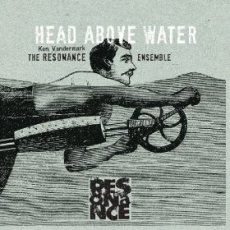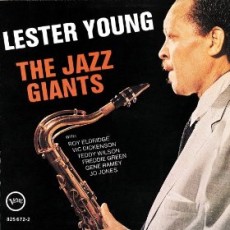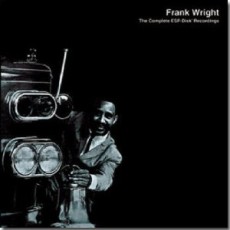
Daily Dose Of Jazz…
Ken Vandermark was born September 22, 1964 in Warwick, Rhode Island but grew up in Boston, Massachusetts. Mostly a self-taught musician, the saxophonist studied intermittently under George Garzone in the early 80s. He performed and led groups while in high school and at McGill University in Montreal, graduated in 1986.
Returning to Boston Ken co-led the groups Lombard Street, Mr. Furious and Barrage Double incorporating “suite forms” into his arrangements and composing pieces dedicated to other Boston bands, thus, developing broad, free-ranging charts as his signature especially in large ensemble settings.
Vandermark moved to Chicago in 1989 and has performed or recorded with many musicians such as Fred Anderson, Joe Morris, Fredrik Ljungkvist and Yakuza to name a few. He first gained widespread attention working with the NRG Ensemble from 1992 to 1996, went on to co-lead DKV Trio, Free Fall, Territory Band, the Vandermark Five and some six more groups, collaborated with Joe Harriott, released his album Furniture Music in 2002 marking his debut as an accomplished soloist and has since concentrated on his own compositions.
A fixture on the Chicago music scene Vandermark plays tenor and baritone saxophone, clarinet and bass clarinet and has received critical praise for his performing multilayered compositions that typically balance intricate orchestration with passionate improvisation. He was awarded a 1999 MacArthur Fellowship, won the Cadence magazine poll for Best Artist and Best Recording. He continues to perform and record.

Daily Dose Of Jazz…
Lester Willis Young was born on August 27, 1909 in Woodville, Mississippi and grew up in a musical family. His father, Willis Handy Young, was a respected teacher, his brother Lee Young was a drummer, and several other relatives performed music professionally. His family moved to New Orleans, Louisiana when he was an infant, then later to Minneapolis, Minnesota. His father was a musician, who would teach his son to play the drums, trumpet and violin in addition to the saxophone.
Playing in his family’s band, known as the Young Family Band, vaudeville and carnivals were their circuit but in 1927 he left, refusing to play the Southern states under the racial segregation of Jim Crow laws.
Settling in Kansas City, Missouri in 1933, he briefly played in several bands, then rose to prominence with Count Basie. He would leave Basie to replace Coleman Hawkins in the Fletcher Henderson orchestra, followed by a stint with Andy Kirk, then back to Basie. Lester made small group recordings for Commodore Records, and the sessions became known as the Kansas City Sessions by the Kansas City Seven, playing clarinet and tenor.
After Young’s clarinet was stolen in 1939, he abandoned the instrument until about 1957. He left the Basie band in late 1940, subsequently led a number of small groups that often included his brother, accompanied Billlie Holiday in a couple of studio sessions in 1940 and 1941 and also made a small set of recordings with Nat King in June 1942. It was Holiday who gave Young the nickname “Pres”, short for President.[
In December 1943 Young returned to the Basie fold for a 10-month stint, drafted into the army during WWII and after discharge joined Norman Granz’s Jazz at the Philharmonic troupe in 1946 and for the next 12 years toured regularly with them. He recorded for Verve, Aladdin and Savoy records through the Forties.
From around 1951 Young’s level of playing declined more precipitously as his drinking increased. His playing showed reliance on a small number of clichéd phrases and reduced creativity and originality. His playing and health went into a crisis, culminating in a 1955 hospital admission following a nervous breakdown, emerging improved in 1956. He recorded and toured with Miles Davis and the Modern Jazz Quartet through Europe and had a successful stint in Washington, DC with the Bill Potts Trio.
By 1957 Lester appeared with Billie Holiday, at a time when both were in their declining years, but both gave brilliant and moving performances with Holiday’s tune “Fine and Mellow”. By this time his alcoholism had a cumulative effect and he was eating significantly less, drinking more and more, and suffering from liver disease and malnutrition.
He made his final studio recordings and live performances in Paris in 1959 with drummer Kenny Clarke at the tail end of an abbreviated European tour during which he ate next to nothing and virtually drank himself to death. He died in the early morning hours of March 15, 1959, only hours after arriving back in New York, at the age of 49.

Daily Dose Of Jazz…
Lyle Stephanovic was born Miko Stefanovic to Serbian émigré parents in Berlin, Germany on August 19, 1908. Better known in the jazz world as Spud Murphy, he grew up in Salt Lake City, Utah where he took the name of a childhood friend. Murphy studied clarinet and saxophone when young and took trumpet lessons from Red Nichol’s father.
He worked with Jimmy Joy in 1927-28 and with Ross Gorman and oboist Slim Lamar in 1928. He worked the early 1930s as saxophonist-arranger for Austin Wylie, Jan Garber, Mal Hallett and Joe Haynes, and then became a staff arranger for Benny Goodman from 1935 to 1937. At the same time he also contributed charts to the Casa Loma Orchestra, Isham Jones, Les Brown and many others.
From 1937 to 1940 Murphy led a big band and recorded for Decca and Bluebird Records in 1938-39. In the 1940s he relocated to Los Angeles where he did work in the studios and with film music, in addition to authoring and teaching the 1200-page “System of Horizontal Composition” also known as the “Equal Interval System”. The Equal Interval System is a modern system of music composition, developed by Murphy over a lifetime of research.
Spud recorded two jazz albums in the 1950s, but his later career was focused on classical and film music. In 2003, orchestra leader Dean Mora, a close friend of Murphy’s, recorded some two dozen of his arrangements in a tribute CD, “Goblin Market”.
Multi-instrumentalist, bandleader and arranger Spud Murphy died in Los Angeles, two weeks short of his 97th birthday on August 5, 2005.

Daily Dose Of Jazz…
Frank Wright was born on July 9, 1935 in Grenada, Mississippi but grew up in Cleveland, Ohio. In his youth he started his musical career playing electric bass with Bobby “Blue” Bland, B. B. King and R&B bands in Memphis and Cleveland. But it was his meeting of Albert Ayler that he switched to the tenor saxophone, embraced the free jazz movement and moved to New York City in the mid-60s.
During this decade he played with some of the biggest names in avant-garde jazz including briefly with John Coltrane. He also made his first recordings as a leader for the ESP label but not finding an appreciative audience, Frank moved to Europe and spent the remainder of his life there.
Wright recorded for a few small labels, performed free jazz with expatriate American musicians and the European leaders of the avant-garde, and returned to the U.S. occasionally to perform with Cecil Taylor and the Art Ensemble of Chicago.
Tenor and soprano saxophonist and bass clarinetist Frank Wright, known for his frantic style, passed away on May 17, 1990.

Daily Dose Of Jazz…
Tony Scott was born Anthony Joseph Sciacca June 17, 1921 in Morristown, New Jersey. He attended Julliard School in the early Forties and by the 50s was working with Sarah Vaughan, Billie Holiday and had a young Bill Evans as a sideman. Late in the decade he won on four occasions the Down Beat critics poll for clarinetist in 1955, 1957, 1958 and 1959 and was known for a more “cool” style than Buddy DeFranco.
For most of his career he was held in some esteem in New Age music circles because of his decades-long involvement in music linked to Asian cultures and to meditation. Despite this he remained relatively little known as the clarinet had been in eclipse in jazz since the emergence of bebop. In 1959 he left New York City and the United States touring South America, Europe, Africa and Southeast Asia. This led to his playing in a Hindu temple, spending time in Japan, and releasing Music for Zen Meditation and capturing Japan’s Down Beat poll for best clarinetist.
He settled in Italy in the 1980s, working with Italian jazz musicians such as Franco D’Andrea and Roman Mussolini, followed by an interest in electronica in his later years. Italian director Franco Maresco produced a documentary on the life of Tony Scott, released three years after his death on March 28, 2007. It was titled Tony Scott: The Story of How Italy Got Rid of the Greatest Jazz Clarinetists.
More Posts: clarinet


